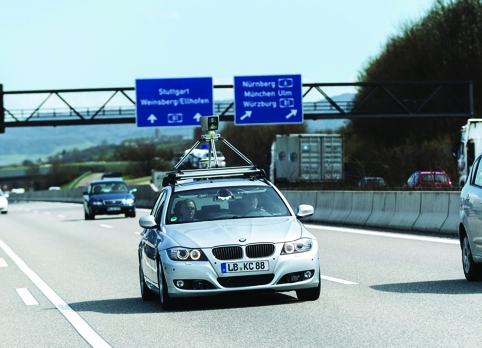We’re hearing a lot about driverless cars at the moment.
Like directed energy weapons, gesture controlled computers, bionic limbs, and wearable computing, the autonomous vehicle is yet another staple of science fiction that’s edging ever closer to reality.
And despite the inherent conservatism of the automotive industry it’s a field of technology development that has actually advanced pretty quickly. In just over a decade the concept has moved from the more eccentric fringes of automotive R&D to a position where the car industry’s biggest hitters regularly put driverless cars at the heart of their vision for the not too distant future.
In Europe, Mercedes, Jaguar Land Rover, BMW, Volvo and Bosch - amongst others - all have driverless car projects. Indeed, in recent weeks BMW and Bosch have both been trialling autonomous vehicles on the German autobahn. Meanwhile, in the US, the famous automotive firm Google has been gathering headlines with its autonomous vehicle system.
The technology has some huge possibe advantages: it promises to remove the potential for human error, offers vehicles vastly improved reaction times, and, by talking to other vehicles and related intelligent transport infrastructure, could help smooth traffic flows.

Trialling the technology recently at Bosch’s test track in Boxberg Germany, I was struck by how natural it felt. I expected to be unsettled, and there is certainly something a little unnerving about the sight of a steering wheel moving on its own, particularly when you’re doing a pretty respectable 80mph.
But - and I’m sure this probably had something to do with the human sat next to me poised to take over if something went wrong - being driven around by a robot car was pretty far down my list of unsettling motoring experiences. Positively calming, in fact, when compared to the memory of hurtling along winding Peak District lanes in my myopic grandmother’s Nissan Sunny.
Clearly the technology isn’t quite glitch free. At one point our vehicle veered off the track onto the grass without warning. Apparently another car wasn’t where it should have been. An argument that wouldn’t really stand up in a real-world collision scenario. But it was on the whole, a pretty compelling demonstration of how many of the key technology challenges have already been met.
Indeed, many of the component technologies of the driverless car are already with us in the form driver assistance systems like adaptive cruise control, or semi-automated parking assist.
The deployment of this technology is being partly driven by legislation. From next year Euro NCAP’s new ratings scheme will only award five stars to a vehicle if at least one driver assistance function is on board. And over the coming years more and more of these technologies will continue to nibble away at the driver’s ultimate control over the vehicle.
The car industry has been quick to champion the driverless car, but as the concept edges ever closer to the mainstream, it will knock up against arguably its biggest obstacles: regulations and consumer acceptance. And despite the near-readiness of the technology, these two factors will play the biggest role in detemrining when the autonomous car becomes a regular feature on our highways and byways.
As always we welcome your views on this fascinating area of technology , and please also take a moment to vote in this week’s poll on the topic





Nanogenerator consumes CO2 to generate electricity
Whoopee, they've solved how to keep a light on but not a lot else.